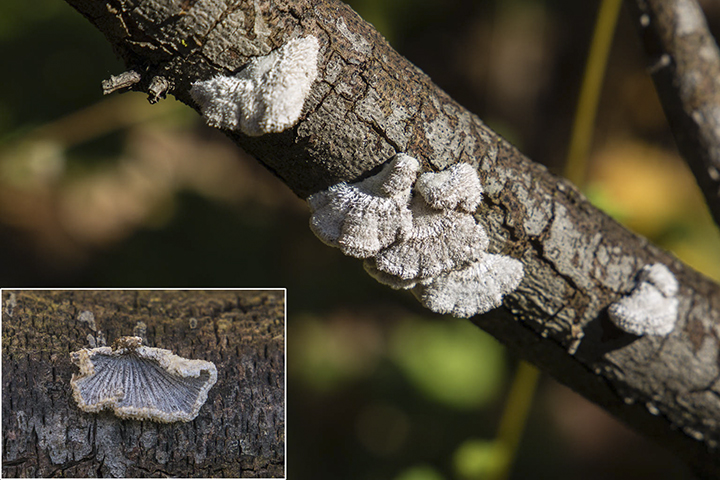Split Gill (Schizophyllum commune) is one of the most common and widespread mushrooms on the planet. It occurs on six continents, absent only from Antarctica, where there are no trees to support it. It is also one of the best studied fungi species. The genome was sequenced in in 2010, and it is often used in the laboratory because it fruits so readily.
Once thought to be a single species with worldwide distribution, Split Gill is now known to be a complex of several closely related species that cannot be reliably distinguished based on their morphology. There are more than 28,000 sexes of Schizophyllum commune. Each individual is sexually compatible with 27,997 (99.98%) of other individuals worldwide.
Split Gill is found year round, scattered, in small groups, in rows, or in fused clusters, on stumps, logs, and sticks of dead hardwood, especially oak. Worldwide it is found decomposing more than 150 different species. The cap is whitish or grayish, densely hairy, and small, less than 1½″ in diameter. The “gills” appear hairy when dry, smooth and split down the middle longitudinally when moist. They close up in dry weather, protecting the spores, and open when moistened. Split Gill is considered inedible in North America and Europe due to its toughness and small size. However, it is used in the cuisines of places with dryer climates, where fleshy mushrooms are difficult to transport to market.

